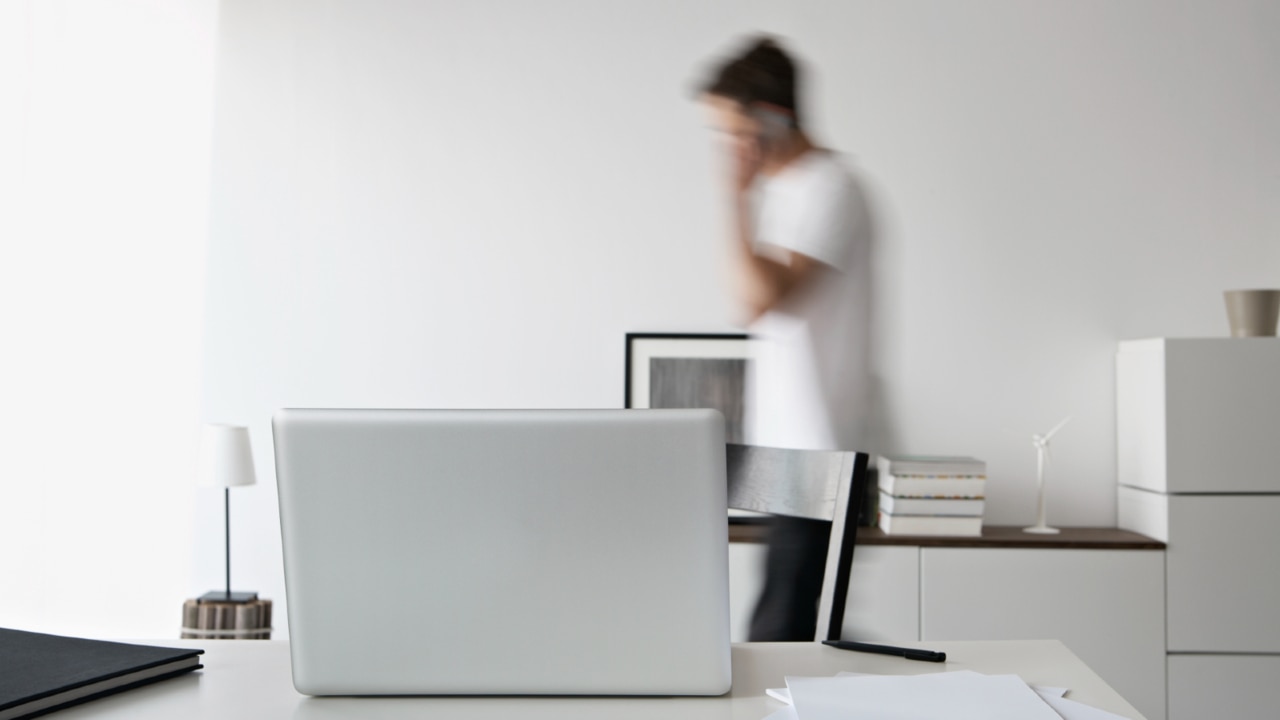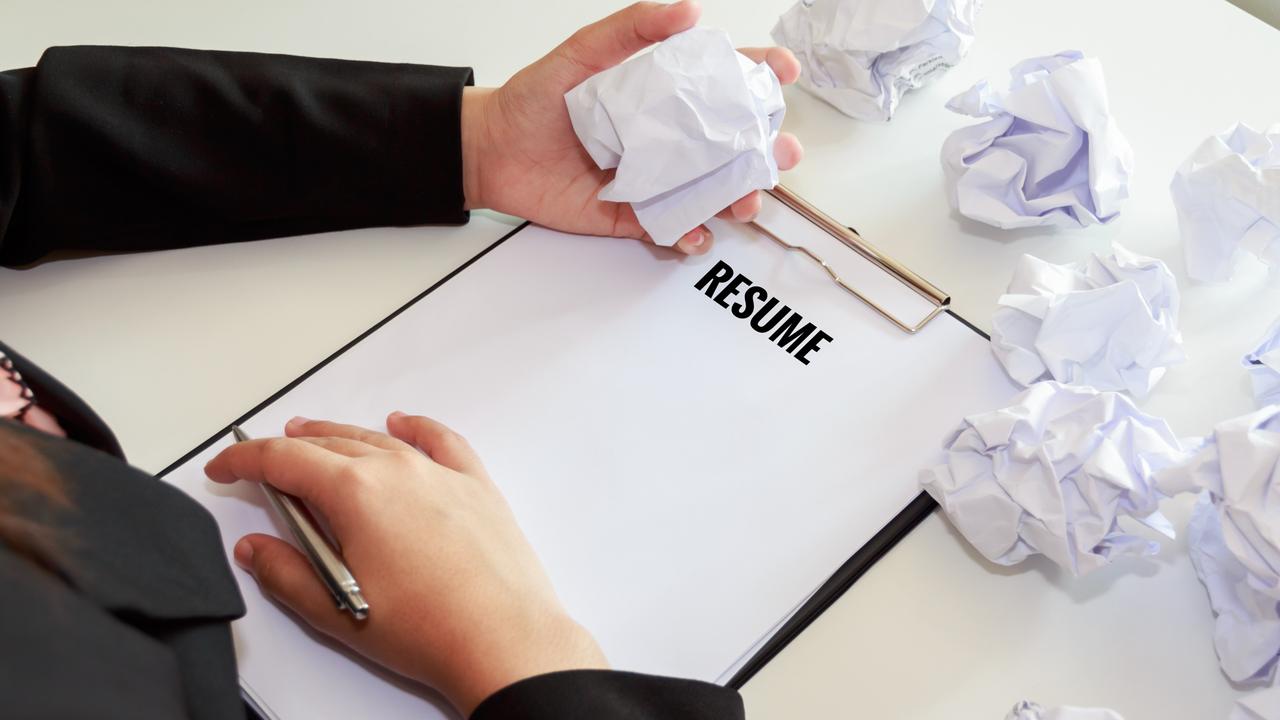‘There are shorts and then there are shorts’: what’s acceptable to wear to work
Sneakers, singlets and birkenstocks — welcome to the post-pandemic office dress code as experts reveal what outfit choices are OK, and what’s inappropriate.

Careers
Don't miss out on the headlines from Careers. Followed categories will be added to My News.
The relaxed dress code adopted while working from home is now infiltrating the office, with Aussies reluctant to give up their shorts for a suit and tie.
Shorts, sneakers, jeans and T-shirts are among the casual clothes appearing in an ever-increasing number of workplaces. But experts warn against becoming too lax with our wardrobes, noting activewear, track pants and thongs are still not appropriate for professional settings.
While office fashion is constantly evolving, Indeed career coach Sally McKibbin says the pandemic, which led to working from home en masse, has fast-tracked changes.
“After working from home in our slippers for two years, many of us simply couldn’t bear the thought of returning to more formal office wear,” says McKibbin, who remembers when dress code policies required women workers to wear stockings, closed-toe shoes and have “appropriate” hair and makeup.
“Nowadays, jeans and sneakers are a popular choice in many workplaces and makeup is a matter of personal choice”

Productivity boost
Alongside more formal attire, slacks, cropped pants, polo shirts, jumpers, cardigans, open-toed shoes, plain T-shirts, blazers and knee-length dresses and skirts no longer look out of place in the office, McKibbin says.
Of course, every workplace is different and some will adhere to a more formal dress code than others,” she says.
“Generally speaking, however, items like ripped jeans, shorts, short skirts, singlets, tank tops, track pants, thongs, beach attire, activewear or sportswear are not appropriate for a professional setting.”
In a bid to get bosses on board with more casual dressing, workers are appealing to their desire for better business performance. A study by people2people Recruitment shows 35 per cent of Aussie workers believe wearing shorts in the office would make them more productive, challenging traditional beliefs that formal attire is essential for workplace efficiency.
Two in five workers say shorts should be able to be worn anytime, while more than a quarter support wearing shorts on days where there are no client meetings, the research finds.
“Australian workers have spoken and the results indicate a desire for more relaxed attire in the office,” says people2people NSW general manager Catherine Kennedy.
“If you really feel uncomfortable (in formal business clothing), maybe you won’t be as productive. And if you’re in advertising or media or a creative (industry), maybe wearing shorts might make it a bit more conducive to coming up with lots of ideas.
“But there are shorts and then there are shorts. You can get quite nice, tailored shorts (that may be suitable for the workplace) – not boardies (board shorts).”

First impressions
Real estate agent Mark Foy, director of McGrath Surry Hills, wears a suit and tie to open house inspections. But in the office, admits he’s more comfortable in jeans.
“You’ve got to make a good impression and while you might lose business because people thought you were dressed too casually, you’re not likely to lose business because people think you are overdressed,” Foy says.
“(Sydney suburb) Surry Hills is very trendy and hip and a lot of clients like that more casual approach (to dress). If you’re wearing a nice blazer and a nice shirt, that fits with our community. But I think suits are very ’80s and ’90s.
“In January, I was coming in (to the office) in board shorts because it was so hot – but they were really nice board shorts."
‘Encouraging Birkenstocks’
Worker productivity more likely comes down to a positive work environment, supportive management and the right resources than clothing, Employment Hero head of people and culture Liam D’Ortenzio believes.
“While shorts may not be the silver bullet to boost productivity, the willingness to explore and adapt to such ideas could contribute to a more inclusive, comfortable and ultimately, more productive environment,” he says.
He says company culture and the nature of the job largely dictates what is appropriate dress for the workplace, with creative industries, such as design, tech and advertising more likely to embrace a casual dress code than finance, law and consulting.
“It’s about finding the balance between comfort and professionalism,” D’Ortenzio says.
“For example, Birkenstocks in a manufacturing environment sounds wholly unsafe to me, but I would in no way judge a colleague turning up in Birkenstocks at our workplace on a hot day. In fact, I’d encourage it.
“On the other hand, singlets might not be universally accepted just yet. Singlets, arguably, might be seen as too casual for a professional setting.”
Indeed career coach Sally McKibbin shares tips on how to dress for the workplace:
● If you’re going to a job interview, check the company’s website and social media profiles for pictures of employees to see how they typically dress. If you’re still unsure, check with your recruiter.
● Dress similarly to the people who hold the position you aspire to. Even when the office dress code is casual, those in leadership positions may be dressed slightly more formally.
● Adopt different styles of business attire for different settings to ensure it’s appropriate for the occasion. Watch what colleagues wear or ask, if you don’t know.
● Always avoid overly large or busy accessories, heels that are impossibly high and hard to walk in, and clothing with profanity or possibly offensive imagery or phrases.
● Avoid overpowering fragrances or deodorants. What may be a delightful scent to you may cause allergic reactions, headaches or nausea for others.
Originally published as ‘There are shorts and then there are shorts’: what’s acceptable to wear to work


